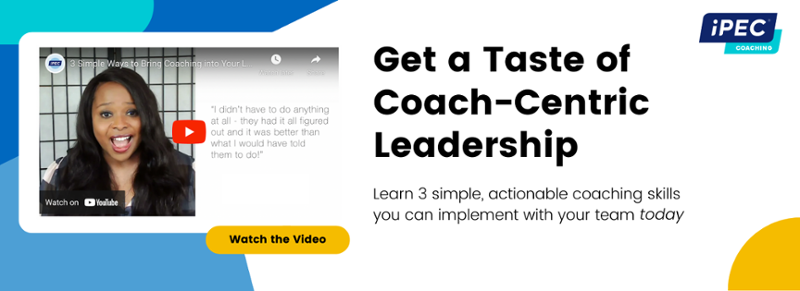How Managing Up Can Help You Make the Most of a Challenging Work Environment
by Theresa Horezga, CPC
Feb 08, 2018 | 3 minutes read
What does “managing up” mean, and how can it improve your work experience?
There are few things as disheartening as working in an uncommunicative, inflexible work environment. Usually, as employees, we look to upper management to set the tone and provide thoughtful, influential leadership.
If our manager is a good one, our work environment usually reflects that: the employees are generally cheerful, engaged, and proactive in their duties and relationships.
But unfortunately, the best case scenario isn’t always the reality— in which case “managing up” may be in your best interest.
A boss with underdeveloped emotional intelligence, leadership, or communication skills can cause waves that upset the entire “feel” of a department. And, sadly, the ripples don’t stop when you walk out the front door at the end of the day. Trouble at work usually finds its way home, impacting your life with partners, kids, recreational buddies, and even disturbing what should be quiet restorative time.
This traditional, top-down, authoritative style of management is what most of us expect, but it’s not the best or even the healthiest way to do things.
As new workers, products, and business models have entered mainstream corporate culture, so has the idea that workplaces should be fluid and adaptive.
Employees today, particularly millennials, are rarely content with “good enough” environments, and the latest communication trends and research support this push toward more collaborative spaces. No matter your title, you can be the source of profound organizational change at your workplace, you just need a few proven tools and techniques to help you navigate the situation.
If you’re in a challenging work environment, you have three options:
1. Tolerate the situation and tough it out.
Most people will try to make the best of things, at least for a little while. There’s nothing wrong with this approach, but in the long run it’s not sustainable, and it typically only works if you’re truly OK with how things are.2. Leave the company and find a position that suits you better.
Once the situation becomes intolerable, people begin looking for other options. Given the opportunity, most people will move on, hoping that a change will fix the problems. But change isn’t always an option, and it’s natural to fear that you’ll be leaving the frying pan only to end up in the fire.
3. Decide that change starts with you, and work to remedy the situation.
Addressing and fixing the situation is obviously the most difficult option, but it’s also your best chance of creating positive, lasting change. It also opens opportunities to get noticed, recognized, and maybe even promoted for the right reasons.
Obviously, the third option is the choice I recommend! I also recognize that it’s all well and good to say “Okay, we need to change things around here!” but how do you actually go about doing it?
I subscribe to the concept of “managing up,” which coincidentally, dovetails nicely with the skills we teach here at iPEC.
To successfully “manage up,” try setting the example instead of waiting for upper management to have an epiphany.
You take the lead by asking questions of management and coworkers, taking the initiative on new projects, and providing solutions instead of objections.
Coaching skills make each of these tasks infinitely easier and can help you positively influence a toxic work environment by:
Identifying the root cause of the problem.
Whether the issues are coming from management styles, personality conflicts, or poor communication, you’ll be able to listen to yourself and others more deeply, cutting past the surface-level conflict to accurately identify what’s really going on.
Being more aware and showing up from a place of neutral objectivity.
Not only does coach training teach you to be more aware of subtle cues, but it gives you the framework and practice to respond from a compassionate, calm place.
Setting a positive example for those around you.
Remember the saying, “A rising tide lifts all boats?” Subtly employed coaching skills have far-reaching effects, and impact the people around you. Over time you’ll often notice them starting to echo your attitude and techniques, and ultimately meeting you in your energetic space rather than staying bogged down with negativity.
This “covert coaching” effectively changes the tone and direction of conversations and interactions within the workplace. And, when you consistently apply them, you may become the ‘go to’ person at the office, effectively keeping your name top of mind for the next time promotions roll around.
Managing up is a strategy anyone can leverage to impact their workplace for the better by modeling the kinds of change they’d like to see. And when you combine this approach with formal coach training, you’ll have an even more robust set of skills to draw on that’ll help you listen for the deeper issue, ask powerful answers, and arrive at effective solutions.
Looking for simple strategies you can implement today, to be a more effective and impactful leader?
This 5-minute video from certified executive coach, Tonya Echols, will show you three simple, actionable strategies you can use starting today that’ll help you unlock new levels of innovation, collaboration, and commitment with your team.


